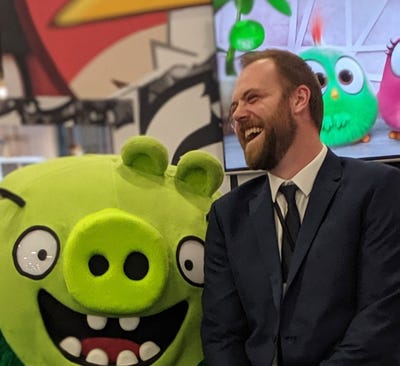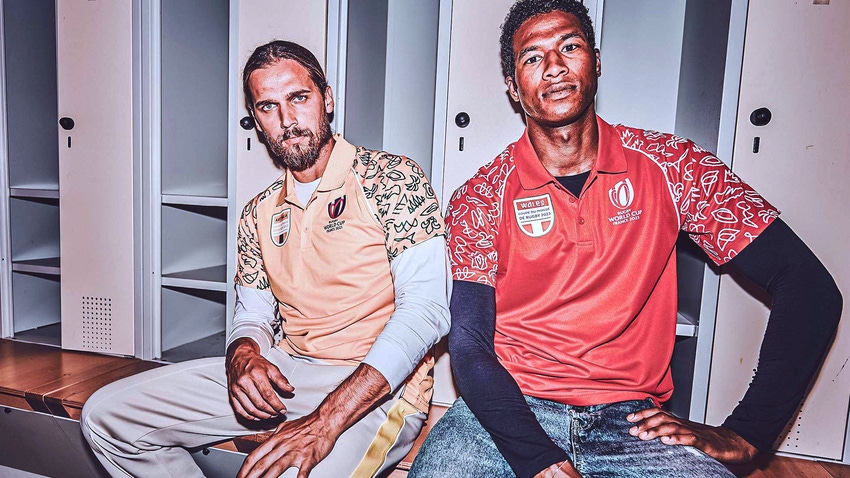
At a Glance
- What is the creative’s role in bringing brands to life?
- How to expand and extend brands
- Core considerations brands need to consider
One of the core signatures of modern licensing is its creativity, transforming brands across different platforms and engaging consumers through increasingly innovative and imaginative means. License Global, speaks to Oliver Dyer, founder, strategy director, Skew, to understand the modern landscape of the creative community and what brands need to know about leveling up their licensing program.
License Global: How far has licensing come, from what was once considered merchandise to what is now an omnichannel engagement program through retail, experience, collaboration and extension into new markets?
Oliver Dyer: Licensing needs a rebrand, right? You nailed it in the question. We’re an omnichannel engagement program through retail, experience, collaboration and extension driven by creative. We’re an industry every bit as creative as the movie or fashion industry, and yet we limit ourselves with the name of a legal framework. What child ever dreamt of joining the “licensing industry?” It’s meaningless in that people literally don’t know what it means. It’s not a real industry. We need to grow up, refer to ourselves with the ambition of our reality and attract a new generation of creatives into an invigorated, fan-centered industry. “Brand extension” at least has more scope. “Fan brands” has a chance of capturing the imagination.
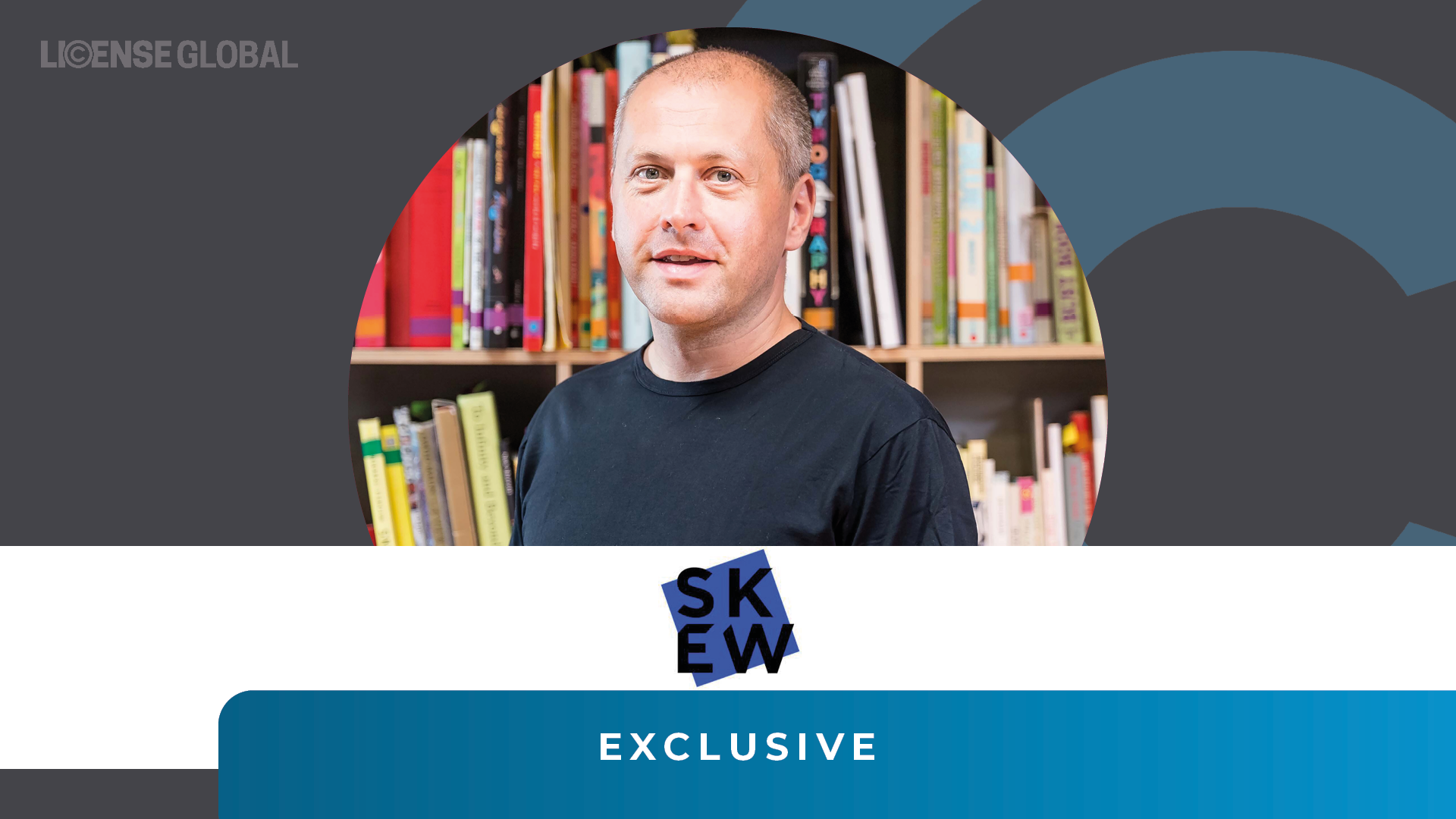
Oliver Dyer, founder, strategy director, Skew
What exactly is the creative’s role in bringing brands to life for consumers in new ways?
Creative is everywhere. Obviously, in the origination of an IP, but that’s just the start. Fan brands flex and respond to the needs and demands of their audience. In entertainment, shows and games change through seasons as writers respond to fan engagement. In sports, we’re seeing the introduction of innovative new formats to traditional pastimes. Culture and heritage institutions constantly seek new ways to engage audiences with new experiences. Creativity is at the heart of it all, joining the dots between where brands are now and where their fans are going next.
Practically, that means developing and updating a creative strategy, leaning heavily on market and competitor insight. It’s more than slapping visual trends around and hoping something will stick. It’s meeting the fan with something that will delight them at a time, place and price that fits. Creative execution is the lubricant that brings those elements to life for the B2B community in product development, design direction, retail experiences, sales, inspiration and compliance guidelines of every description.
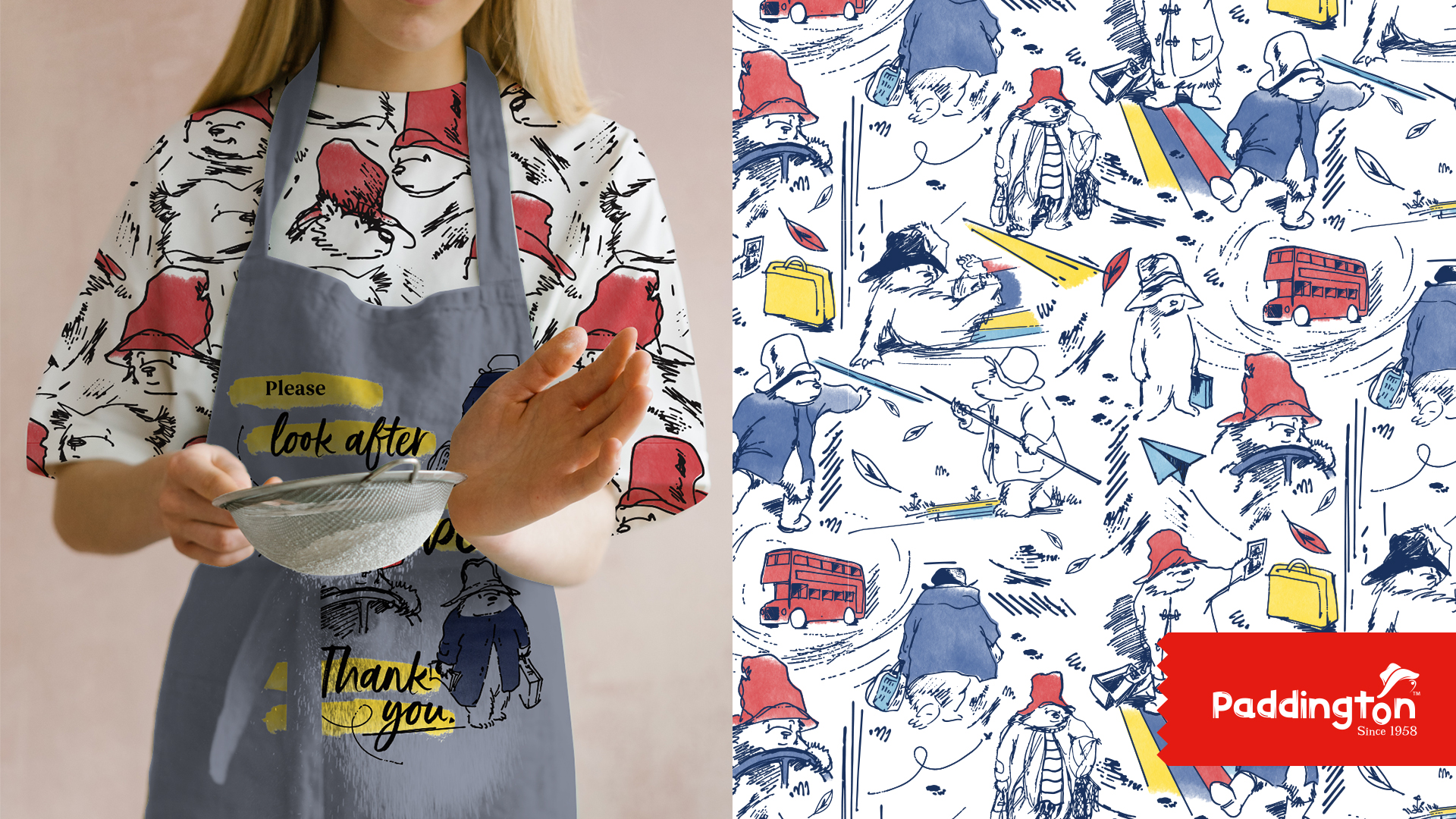
Paddington apron, Skew
From your position at Skew, how have you seen the European market embrace creativity in new and meaningful ways?
Europe has always been a sophisticated market in design terms. AI is the shiny new hotness, and the industry noise has moved on from NFTs, but look, W3 hasn’t gone away. I love how heritage brands are experimenting with new ways of meeting an audience, like The Museum of Science, Boston, in Roblox or Skew’s client, The British Museum, entering The Sandbox. This is all brand extension, right? Persistent virtual experiences are exploding. Apple’s Vision Pro is just around the corner. Digital goods are a thing.
The poster child for digital goods right now is Nike/ RTFKT Cryptokicks. It wouldn’t surprise me if it gets a rebrand soon, loses the stench of ‘crypto’ and becomes just another brand extension. This is where “licensing” is in danger of losing its relevance. These new extensions aren’t necessarily built around a license; new extensions could be community-generated with the revenue shared in other ways. Early community-model proponents, like FaZe Clan, aren’t performing right now, but there’s a pipeline of creators from Mr. Beast to Sidemen down that will build on those lessons.
More traditionally, I’m also enjoying unusual collaborations like another of Skew’s clients, The Van Gogh Museum’s deal with “Pokémon at the Van Gogh Museum.” What a great way to introduce a new audience to both brands and inspire products.
Finally, there are Netflix consumer products, which have been doing notable work in Europe over the previous few years. This is licensing more purely as marketing. It’s providing an ecosystem for fans and driving people back to the brand. It’s a cliche in creativity that constraints are a driver of innovation. Netflix is reacting fast to brands exploding on and off the channel. Their speed to market is brilliant; they act more like a direct-to-retail model than traditional licensing, and activation is as important as the product.
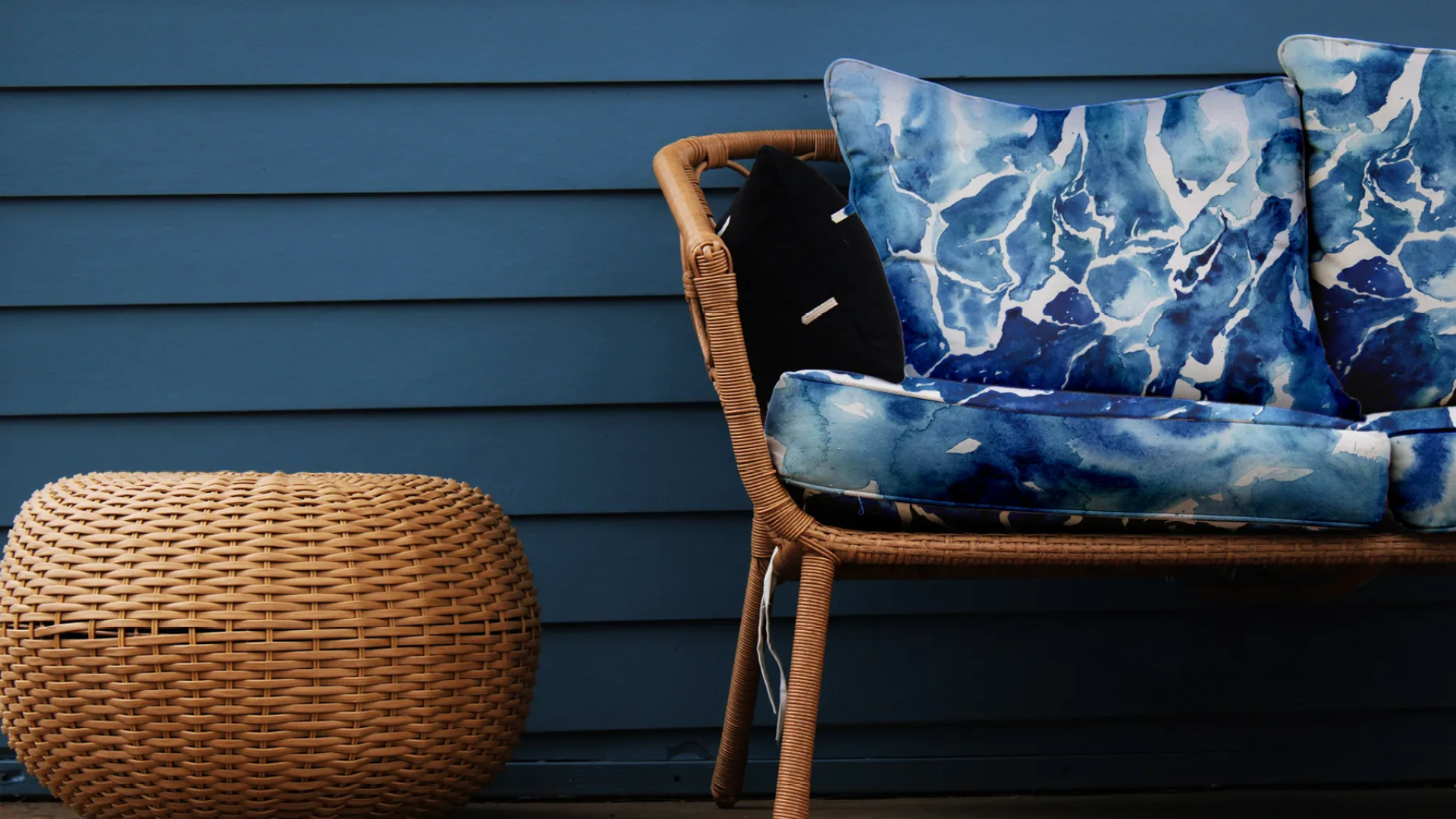
National Trust sofa, Skew
As a creative, how do you expand and extend brands while keeping a core focus on the DNA and maintaining authenticity while pushing boundaries?
It’s back to the fans. Go where they go. The truth is, most licensed IP doesn’t have a codified DNA outside of lifestyle, FMCG brands. This is especially true in entertainment, where successful IPs are outliers, often becoming a success beyond the expectation of the IP owner. Entertainment places a LOT of bets – it’s not always appropriate to invest at the level FMCG brands do into fully formed brand strategies.
This is one reason why entertainment guides often riff on an aesthetic level, using trends to differentiate. That’s not a dig; Skew was the first to do it – it works. But some more exciting product design comes from collaborations because designers can leave the rails of a style guide and speak more deeply (if instinctively) to brand DNA.
Where codified DNA becomes essential is in the transition to franchise. Think Harry Potter to Wizarding World or a move to multi-product IPs like Paddington, where there’s an extensive range of target markets, media products and categories being explored simultaneously. For extensions to be authentic, franchise guides need to do a lot of heavy lifting so partners can get deeply under the skin of why fans love a brand to be able to extend beyond superficial aesthetics.
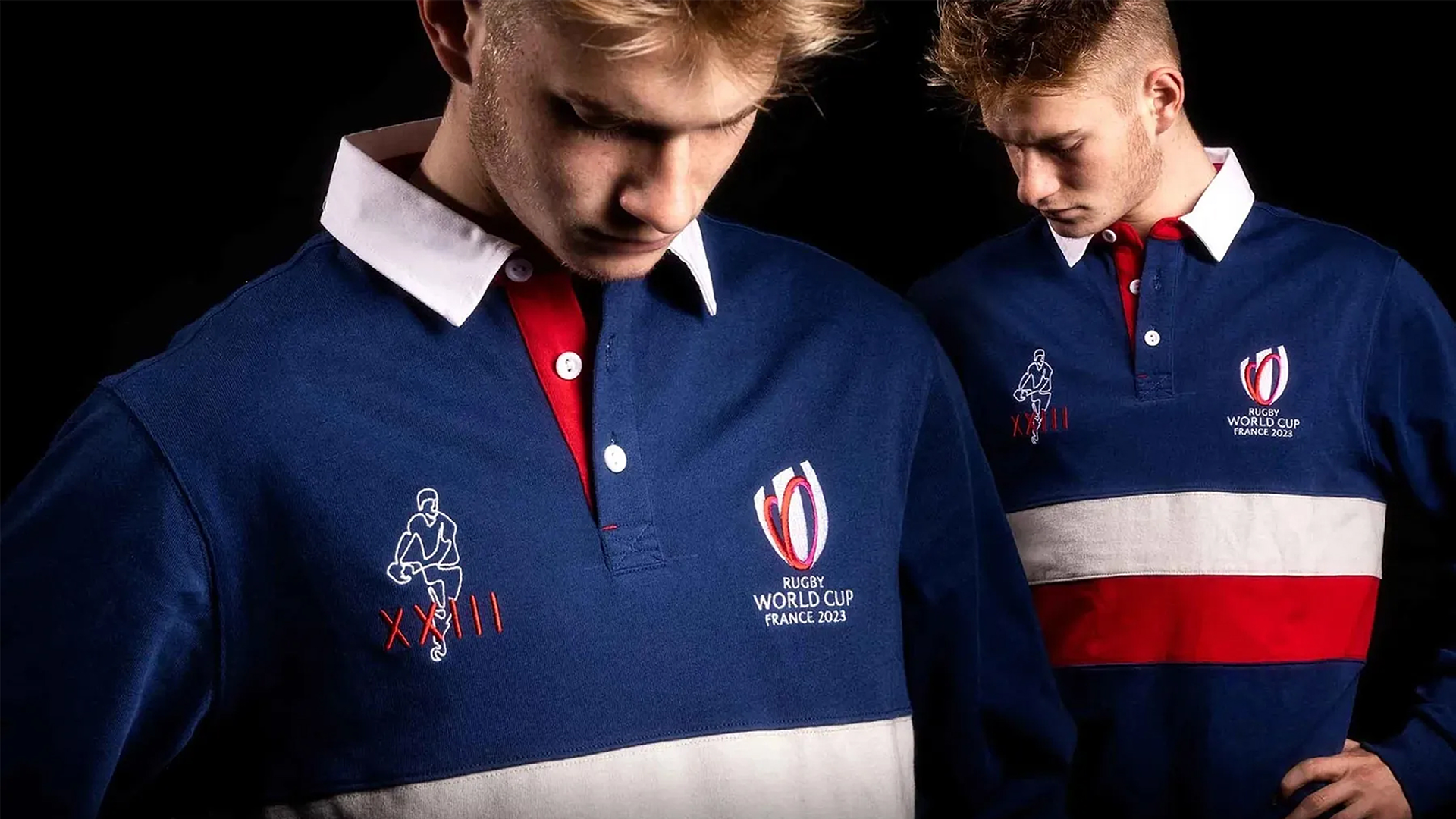
Rugby World Cup France 2023 shirt, Skew
What are some of the core considerations brands need to consider when bringing creative teams like Skew on board?
I can’t speak for all creative teams – just Skew. We’re focused on effectiveness, so we need you to start with “why.” What are your creative and commercial objectives? What does success look like to you? Who do you need to reach? What new markets do you want to crack? What is stopping you?
You can brief a list of deliverables if you like, and you’ll get world-class deliverables back. But briefing commercial objectives allows us to develop a framework of effectiveness that can move the needle with you.
What are some of the most recent examples from Skew (you can talk about) that showcase the necessity for creative in the modern licensing landscape?
Instead of specific deals or collaborations, I think it’s important that the industry consider strategic approaches to creativity based on effectiveness. Entertainment brand extension’s creative challenge is about stopping the churn. I’ve been told by senior licensing professionals on both sides of the pond that as much as 90% of creative assets in entertainment never get used. In-house. Agency. Doesn’t matter. The waste is astonishing.
Creative for entertainment doesn’t mean more of the same. For Hasbro, for example, we’ve been going back to fundamentals of play patterns based on deep qualitative research and building creative strategies for CP based on the findings. This isn’t new but has been forgotten by many in the rush to slap “trends” around.
But where Skew’s obsession with effectiveness is unique is when extending brands with restrictions on licensable visual assets. Competitions like The Rugby World Cup, multi-IP sports like Formula 1 and Heritage brands like National Trust all have one thing in common: brands that are highly emotive with their audience with limited core licensable visual assets beyond their identity. Translating these intangible assets – what fans think and feel about a brand – is more challenging than trend-led asset packs. It has more in common with a brand identity process, goes back to the DNA being fully understood, and right now, it’s the biggest part of our business.
Working with the The Van Gogh Museum, Rugby World Cup, Hasbro and Cerveza Pacífico Clara, to name just a few brands on the studio’s list, Skew is pushing boundaries by focusing on the fans and translating their thoughts, feelings and connection with a brand into a tangible style and brand message. What’s more, is that through expertise built over 20 years, Skew has a bold, progressive vision of the future of licensing, and it’s a true evolution of the rapidly changing, yet incredibly creative, consumer-led market of today.
This article was taken from the December 2023 issue of License Global.
Read more about:
Van Gogh MuseumPokémonPaddingtonNational TrustFormula 1GlobalLicense Global OriginalDecember 2023About the Author(s)
You May Also Like

